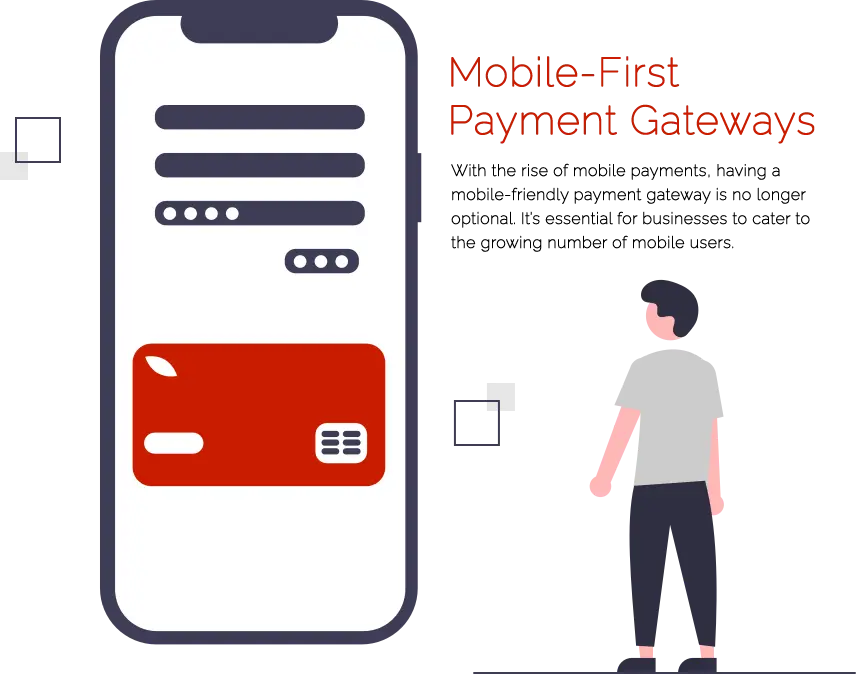
Top 6 Trends in Payment Gateway Integration for 2024
Introduction
At Techcmantix, we understand the critical role that payment gateway integration plays in the success of your business. As digital payments continue to evolve, staying updated with the latest trends is essential. From mobile-first solutions to AI-driven advancements, these trends can help you choose the right payment gateway and ensure seamless transactions for your customers. In this blog, we’ll explore ten trending topics that are shaping the future of payment gateway integration.
1. Mobile-First Payment Gateways
With the rise of mobile payments, having a mobile-friendly payment gateway is no longer optional. It’s essential for businesses to cater to the growing number of mobile users.
User Experience
Mobile-first gateways offer a seamless and intuitive user experience, crucial for retaining customers.
Speed and Efficiency
These gateways are optimized for speed, ensuring quick transactions.
Security
Enhanced security features protect mobile transactions from fraud.
Integration
Easy integration with mobile apps and websites.
Trends
Increasing adoption of mobile wallets and contactless payments.
Example Scenario: Imagine a retail business that recently launched a mobile app. By integrating a mobile-first payment gateway, customers can easily make purchases directly from their smartphones, leading to a significant increase in mobile sales and customer satisfaction.
2. Security Best Practices for Payment Gateway Integration
Protecting customer data and preventing fraud are top priorities for any business. Implementing robust security measures is essential.Encryption
Use of advanced encryption methods to secure data.
Tokenization
Replacing sensitive data with unique tokens.
PCI Compliance
Adhering to Payment Card Industry Data Security Standards.
Fraud Detection
Implementing AI-driven fraud detection systems.
Regular Audits
Performing routine security audits to detect and address potential vulnerabilities.
Example Scenario: A financial services company integrates a payment gateway with advanced encryption and AI-driven fraud detection. This not only protects customer data but also builds trust, leading to increased customer retention and reduced fraud incidents.

3. Selecting the Ideal Payment Gateway for Your Business
Selecting the right payment gateway involves considering various factors to meet your business needs.
Fees
Understanding the fee structure, including transaction and setup fees.
Features
Evaluating features like multi-currency support, recurring billing, and more.
Integration Ease
Assessing how easily the gateway integrates with your existing systems.
Customer Support
Availability of reliable customer support.
Reputation
Researching the gateway’s reputation and user reviews.
Example Scenario: An e-commerce startup evaluates several payment gateways and chooses one with low transaction fees, excellent customer support, and easy integration with their existing platform. This decision helps them manage costs effectively while providing a smooth checkout experience for their customers.

4. Payment Gateway Integration Trends in Emerging Markets
Emerging markets are witnessing significant growth in e-commerce and digital payments, presenting new opportunities and challenges.
Adoption Rates
Rapid increase in digital payment adoption.
Infrastructure
Development of payment infrastructure in these regions.
Local Preferences
Understanding and catering to local payment preferences.
Regulatory Environment
Navigating the regulatory landscape.
Partnerships
Collaborating with local payment providers.
Example Scenario: A global online retailer expands into an emerging market by integrating a payment gateway that supports local payment methods and complies with regional regulations. This strategic move helps them tap into a new customer base and increase sales.
5. The Impact of AI and Machine Learning on Payment Gateway Technology
AI and machine learning are revolutionizing payment gateway technology, enhancing security and user experience.Fraud Detection
AI-powered systems for instant identification of fraudulent activities.
Personalization
Tailoring payment experiences based on user behavior.
Efficiency
Improving transaction processing speed and accuracy.
Customer Support
AI-powered chatbots for instant support.
Predictive Analytics
Using data to predict and prevent potential issues.
Example Scenario: An online subscription service uses an AI-powered payment gateway to detect and prevent fraudulent transactions in real-time. This not only reduces chargebacks but also ensures a secure and seamless payment experience for legitimate customers.

6. Payment Gateway Integration Challenges and Solutions
Integrating a payment gateway can come with its own set of challenges. Here’s how to address them.Integration Complexity
Simplifying the integration process with APIs and plugins.
Transaction Failures
Ensuring reliable transaction processing to minimize failures.
Chargebacks
Implementing measures to reduce chargebacks and disputes.
Scalability
Choosing a gateway that can scale with your business growth.
Compliance
Staying compliant with global and local regulations.
Example Scenario: A growing SaaS company faces challenges with transaction failures and chargebacks. By choosing a scalable payment gateway with robust API support and implementing measures to reduce chargebacks, they improve transaction success rates and customer satisfaction.
Conclusion
At Techcmantix, we believe that staying ahead in the digital payment landscape requires understanding and adapting to the latest trends in payment gateway integration. By focusing on mobile-first solutions, robust security practices, and leveraging AI, businesses can ensure seamless and secure transactions for their customers. Keep these trends in mind as you navigate the evolving world of digital payments.



